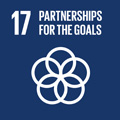- Docente: Marco Milani
- Credits: 6
- SSD: SPS/14
- Language: English
- Teaching Mode: Traditional lectures
- Campus: Ravenna
- Corso: Second cycle degree programme (LM) in International Cooperation on Human Rights and Intercultural Heritage (cod. 9237)
-
from Jan 27, 2025 to Mar 06, 2025
Learning outcomes
The aim of this course is to explore the role East Asia plays in the international political system and how that role will develop in the coming years. By the end of the course, the students is able to handle a set of topics related to historical and contemporary patterns of state relations in East Asia, including East Asian development models, human rights issues, the role of regional multilateral institutions, environmental and security challenges, and other related global questions.
Course contents
The course aims at introducing, analyzing and understanding the historical development of East Asia through the lens of the socio-political and economic changes that have taken place in the region starting with the encounter with Western imperialist powers in the mid-XIX century up until today. Throughout this long and complex historical paths we will focus on some key events and processes that have shaped the development of the region and have had relevant consequences also for the rest of the world.
East Asia represents one of the most important regions in the world in terms of population, natural resources, trading and investment opportunities, and its role within the international system is constantly growing up to the point that the XXI century has been also defined as the ‘Asian century’. Despite the outstanding economic performances and its leading role at the global level, the region still remains, in many cases, unstable from the political point of view with several sources of tension and instability, both among actors within the region and with external powers. Issues such as the division of the Korean peninsula, enduring territorial disputes, cross strait relations between Taipei and Beijing, the growing rivalry and competition between China and the United States are just a few examples of the crucial issues that remains unresolved in East Asia. In order to fully understand the complexity of this situation it is fundamental to look back at the historical processes that have characterized the socio-political development of the region.
For this reason, the course first provides a more general overview of the historical development of the main countries in East Asia, and of the region as a whole, and then addresses some key issues that are particularly relevant nowadays. The geographical context of reference will be that of East Asia, including both Northeast and Southeast Asia, with a specific emphasis on the interconnections among different states and actors, and the transnational character of the addressed issues. In this context, specific attention will be given to the crucial role played by the main actor in the region: China.
The course is based on the constant and active participation of students. This participation, which does not end with showing up in the classroom, constitutes part of the final evaluation.
The course is divided into two parts.
The first part, that will cover approximately the first half of the course, is dedicated to exploring the historical path of East Asia, starting from the encounter with Western imperialist powers in the mid-XIX century. During this long reconstruction a specific attention will be given to key historical events and processes, such as: the forced opening of China and Japan, the crisis and collapse of the Chinese Empire and the rise of Imperial Japan, the colonization processes in East Asia, two World Wars in Asia, the Chinese civil war and the establishment of the People’s Republic of China, the bipolar balance of power of the Cold War and its consequences, the Korean and the Vietnam wars, the decolonization process in Southeast Asia, the economic development of Japan, South Korea and the other Asian ‘tigers’. This solid base of knowledge will then give us the possibility to analyze the current situation in East Asia and to understand specific issues that are extremely relevant today.
The second part focuses on the analysis of selected issues that represent some of the most relevant aspects for the development of contemporary East Asia and for its role at the global level. The issues that will be analyzed are:
- The role of China and other East Asian actors in the international arena;
- East Asian development models;
- Non-traditional security challenges, in particular environmental and climate security ;
- Human rights and human security issues and controversies in East Asia;
- The concept of soft power and its different interpretations in East Asia.
For each specific issue there will be an introductory lecture part followed by a collective discussion in the classroom based on the readings and materials assigned; for this reason it is absolutely essential to do all the readings before coming to class.
--- Please never check your cell phone or use your laptop for things other than taking notes while in class. If you do, you’ll lose participation points. If you do it regularly you’ll lose all your participation points ---
Students with SLD or temporary or permanent disabilities. It is suggested that they get in touch as soon as possible with the relevant University office (https://site.unibo.it/studenti-con-disabilita-e-dsa/en ) and with the lecturer in order to seek together the most effective strategies for following the lessons and/or preparing for the examination.
Readings/Bibliography
ATTENDING STUDENTS:
The list of required readings includes a textbook part, that will be used for the first part of the course, and selected readings that will be provided in electronic format by the instructor to cover the second part of the course.
Textbook part:
- Charles Holcombe (2020). A History of East Asia: From the origins of civilization to the Twenty-First century. Cambridge: Cambridge University Press. Chapters: 8-9-10 (pp. 217-310).
- Alice Lyman Miller and Richard Wich (2011). Becoming Asia: Change and Continuity in Asian International Relations Since World War II. (Stanford: Stanford University Press).
In place of the two previous readings:
- Antonio Fiori, Marco Milani, Andrea Passeri (2022). L’Asia. Storia, Istituzioni e Relazioni Internazionali. (Firenze: Le Monnier Università). All chapters except: Parte prima, capp. 3-4; parte seconda, capp. 3-4; parte terza, cap. 2; parte quarta, cap. 2; parte quinta, cap. 3.
Selected readings:
- The complete list of selected readings (approximately around 10 papers) to cover the specific topics and issues addressed in the second part of the course will be provided during the course. All the readings will be provided in electronic format through the university online platform.
NON-ATTENDING STUDENTS:
The bibliography for non-attending students includes all the readings in the required list plus additional readings. For this reason, they are kindly requested to contact the instructor in due time and at least once before the exam.
Teaching methods
The course will be articulated into both lectures and class discussions.
Lectures will include slide presentations, readings of texts, analysis of images and short videos.
The methodology adopted for class discussions (group discussion, class discussion, presentations, Q&A) will be defined at the beginning of the course, taking into consideration the number of attending students. The active participation of students is a key component of the course and will be part of the final evaluation; for this reason, students are required to carefully read the assigned material before class discussions and to actively take part in them.
Be informed that the use of generative artificial intelligence is considered a form of plagiarism.
Assessment methods
Considering the importance of active class participation attendance is strongly recommended.
ATTENDING STUDENTS:
Class participation + Research Paper + Oral exam
The final evaluation for attending students will be weighted average of the evaluation of three components:
- Active class participation during the course: participation in class discussion and activities, overall level of attention, contribution/participation to class presentations/discussions and number, pertinence and relevance of interventions.
-
A short research paper (3500 words) on a topic, key concept or issue raised during the course, or related to the themes of the course (in this last case it should be cleared with the professor) chosen by the students. The short research paper must be emailed to the instructor no later than 7 days prior to the day of the final oral exam; papers submitted beyond that deadline will not be marked. Specific details about the research paper will be given during the first lecture and will be the object of specific sessions during the course.
-
The oral exam is based on a discussion that starts from the topic chosen by the student for the research paper and then moves to the analysis of the topics discussed in class (based on the slides and on the required readings). It is aimed at assessing the student’s ability to verbally articulate topics and issues discussed in class, while offering the student the opportunity to show her/his ability to critically reassess such material.
Attending students who receive an insufficient evaluation for the research paper will undergo an oral exam on the entire syllabus.
NON-ATTENDING STUDENTS:
Oral exam
For non-attending students the assessment will take place through an oral exam on a specific syllabus provided by the instructor, that will include all the required readings plus additional ones. For this reason, they are kindly requested to contact the instructor in due time and at least once before the exam.
The ability of the student to achieve a coherent and comprehensive understanding of the topics addressed by the course, to critically assess them and to use an appropriate language will be evaluated with the highest grades (A = 27-30 con lode).
A predominantly mnemonic acquisition of the course’s contents, together with gaps and deficiencies in terms of language, critical and/or logical skills will result in grades ranging from good (B = 24-26) to satisfactory (C = 21-23).
A low level of knowledge of the course’s contents together with gaps and deficiencies in terms of language, critical and/or logical skills will be considered as ‘barely passing' (D = 18-20).
The absence of a minimum level of knowledge of the course contents, combined with inadequate language and logical skills and training gaps, will produce a fail (E) grading.
Students with SLD or temporary or permanent disabilities. It is necessary to contact the relevant University office (https://site.unibo.it/studenti-con-disabilita-e-dsa/en ) with ample time in advance: the office will propose some adjustments, which must in any case be submitted 15 days in advance to the lecturer, who will assess the appropriateness of these in relation to the teaching objectives.
Teaching tools
Specific readings on the covered topics, slides, images and short videos, audio-visual materials.
Office hours
See the website of Marco Milani
SDGs




This teaching activity contributes to the achievement of the Sustainable Development Goals of the UN 2030 Agenda.
